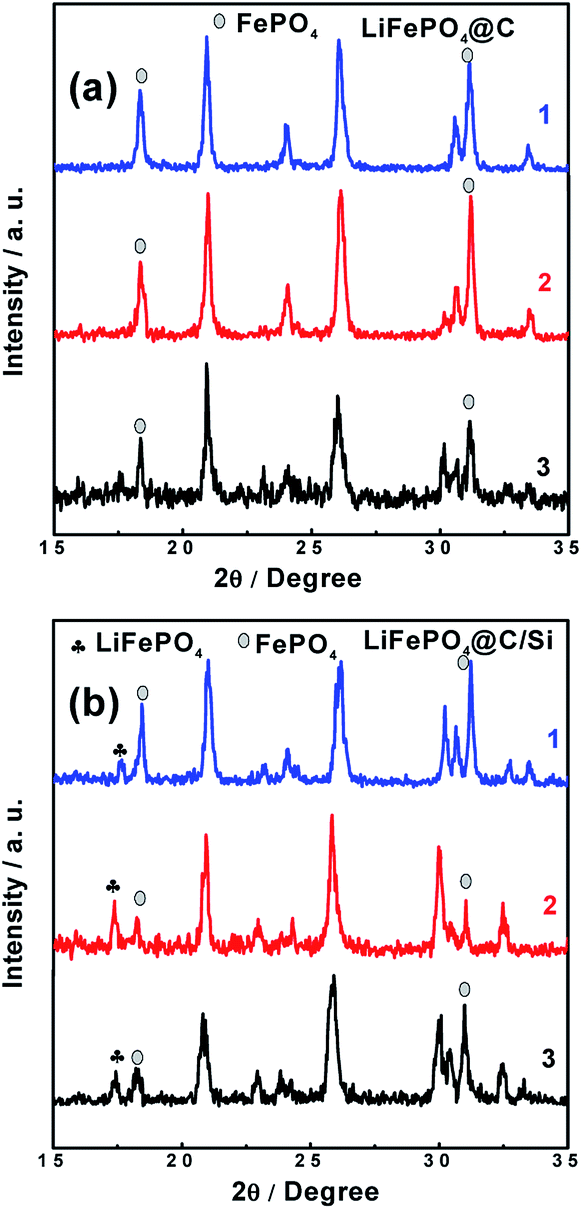Later this 12 months, the Canadian firm Li-Cycle will begin constructing a US $175 million plant in Rochester, N.Y., on the grounds of what was the Eastman Kodak complicated. When completed, will probably be the most important lithium-ion battery-recycling plant in North America.
The plant can have an eventual capacity of 25 metric kilotons of enter materials, recovering ninety five percent or more of the cobalt, nickel, lithium, and other beneficial parts through the corporate’s zero-wastewater, zero-emissions course of. “We’ll be one among the most important home sources of nickel and lithium, as well as the one supply of cobalt within the United States,” says Ajay Kochhar, Li-Cycle’s cofounder and CEO.
Founded in late 2016, the corporate is part of a booming industry centered on stopping tens of thousands of tons of lithium-ion batteries from coming into landfills. Of the 180,000 metric tons of Li-ion batteries accessible for recycling worldwide in 2019, simply slightly over half had been recycled. As lithium-ion battery manufacturing soars, lithium battery pack so does curiosity in recycling.
In line with London-based mostly Circular Energy Storage, a consultancy that tracks the lithium-ion battery-recycling market, about a hundred corporations worldwide recycle lithium-ion batteries or plan to do so quickly. The trade is concentrated in China and South Korea, the place the vast majority of the batteries are also made, however there are several dozen recycling startups in North America and Europe. In addition to Li-Cycle, that record contains Stockholm-primarily based Northvolt, which is jointly constructing an EV-battery-recycling plant with Norway’s Hydro, and Tesla alum J.B. Straubel’s Redwood Materials, which has a broader scope of recycling digital waste. [See sidebar, “14 Li-ion Battery-Recycling Projects to observe.”]
These startups purpose to automate, streamline, and clear up what has been a labor-intensive, inefficient, and soiled process. Traditionally, battery recycling includes either burning them to get well a number of the metals, or else grinding the batteries up and treating the ensuing “black mass” with solvents.
Battery recycling doesn’t just must be cleaner-it additionally must be reliably profitable, says Jeff Spangenberger, director of the ReCell Center, a battery-recycling research collaboration supported by the U.S. Department of Energy. “Recycling batteries is best than if we mine new materials and throw the batteries away,” Spangenberger says. “But recycling firms have bother making income. We need to make it price efficient, so that folks have an incentive to carry their batteries again.”
Workers sort lithium-ion batteries at Li-Cycle’s recycling facility close to Toronto. Photo: Li-Cycle
Li-Cycle will function on a “spoke and hub” model, with the spokes handling the preliminary processing of old batteries and battery scrap, and the black mass feeding into a centrally situated hub for closing processing into battery-grade materials. The company’s first spoke is near Toronto, the place Li-Cycle is headquartered; a second spoke simply opened in Rochester, the place the future hub is slated to open in 2022.
Li-Cycle engineers iteratively improved on conventional hydrometallurgical recycling, Kochhar says. For example, relatively than dismantling an EV battery pack into cells and discharging them, they separate the pack into larger modules and course of them with out discharging.
In terms of battery chemistries, Li-Cycle is agnostic. Mainstream nickel manganese cobalt oxide batteries are simply as simply recycled as ones primarily based on lithium iron phosphate. “There is no uniformity within the business,” Kochhar notes. “We do not know the precise chemistry of the batteries, and we need not know.”
Just what number of batteries will have to be recycled? If you adored this article and you would like to be given more info about Rechargeable Battery Distributor nicely visit our own internet site. In displays, Kochhar refers to an “incoming tsunami” of spent lithium-ion batteries. With world sales of EVs expected to climb from 1.7 million in 2020 to 26 million in 2030, it is simple to imagine we’ll quickly be awash in spent batteries.
But lithium-ion batteries have long lives, says Hans Eric Melin, director of Circular Energy Storage. “Thirty percent of used EVs from the U.S. market at the moment are in Russia, Ukraine, and Jordan, and the battery came alongside as a passenger on that journey,” Melin says. EV batteries can also be repurposed as stationary storage. “There’s nonetheless a lot of worth in these [used] products,” he says.
Melin estimates that the United States will have about eighty metric kilotons of Li-ion batteries to recycle in 2030, while Europe can have 132 metric kilotons. “Every [recycling] company is establishing a plant with thousands of tons of capacity, however you cannot recycle more material than you may have,” he notes.
Materials that may be recovered from a lithium-ion battery include varied metals and plastics. Photo: ReCell
ReCell’s Spangenberger agrees that the need for increased battery-recycling capability will not be pressing for a while. That’s why his group’s research is concentrated on longer-time period tasks, including direct cathode recycling. Traditional recycling breaks the cathode down into a metallic salt, and reforming the salt again into cathodes is expensive. ReCell plans to exhibit an economical technique for recycling cathode powders this 12 months, however it is going to be another five years earlier than those processes will likely be prepared for high-volume software.
Even when the battery tsunami hasn’t yet arrived, Kochhar says shopper electronics and EV manufacturers are taken with Li-Cycle’s providers now. “Often, they’re pushing their suppliers to work with us, which has been nice for us and actually fascinating to see,” Kochhar says.
“The researchers concerned in recycling are very obsessed with what they do-it is an enormous technical problem and so they want to figure it out because it is the right thing to do,” says Spangenberger. “But there’s also cash to be made, and that is the attraction.”
14 Li-ion Battery-Recycling Projects to look at
American Battery Technology: As part of this company’s deal with mining, extracting, rechargeable battery distributor and recycling lithium and different battery materials, it plans to open a battery-metals recycling plant in Incline Village, Nev., with an eventual capability of 20,000 metric tons of scrap supplies and end-of-life batteries per year.
Battery Resourcers: This Worcester, Mass., startup, a spin-off of Worcester Polytechnic Institute, is focused on making new cathode powders for lithium-ion batteries from postindustrial scrap.
Brunp Recycling Technology Co.: A subsidiary of the leading Li-ion battery maker CATL, Brunp is the biggest recycler of those batteries in Asia (and therefore the world). Its new plant in China’s Hunan province reportedly can recycle 100,000 metric tons of lithium-ion battery scrap per 12 months.
Ganfeng Lithium: The Chinese Li-ion battery maker plans to construct a battery-recycling plant in Mexico, to sell minerals to electric-vehicle makers and suppliers, together with Tesla and South Korea’s LG Chem.
Green Li-ion: The Singapore startup will open its second recycling plant in early 2021, which focuses on recycling Li-ion battery cathodes which can be “99.9 p.c pure.”
Li-Cycle: Later this year, the Canadian firm will start constructing a US $175 million recycling plant in Rochester, N.Y. When completed will probably be North America’s largest Li-ion-battery useful resource-restoration facility.
Northvolt: This Swedish battery startup, based by former Tesla executives in 2016, already has an experimental recycling plant up and running and, with aluminum firm Hydro, plans to open an 8,000-metric-ton-per-yr recycling plant in Norway this yr.
Primobius: This joint venture of Australia’s Neometals and Germany’s SMS Group will demonstrate Neometal’s proprietary recycling methodology with plans to scale up commercially in Europe.
ReCell Center: Funded by way of a 3-yr, $15 million grant from the U.S. Department of Energy’s Vehicle Technologies Office, this analysis middle is concentrated on longer-time period methods equivalent to direct cathode recycling.
Redwood Materials: Cofounded in 2017 by former Tesla CTO J.B. Straubel, the Carson, Nev., startup has positioned itself as a raw-supplies supplier and can recycle electronic waste generally. It’s amongst 5 initial recipients from Amazon’s $2 billion Climate Pledge Fund.
ReLIB: Comparable to the U.S. ReCell Center, this R&D collaboration based mostly at the Faraday Institution in Birmingham, England, is targeted on enhancing the effectivity of EV battery recycling within the United Kingdom.
SMCC Recycling: A joint venture of South Korea’s SungEel HiTech Co., a battery recycler, and Metallica Commodities Corp., the company plans to open an “environmentally friendly” 5,000-metric-ton Li-ion recycling plant in Endicott, N.Y.

Tesla: For the past couple of years, Elon Musk has hinted that the EV maker will recycle its personal batteries. Now it has reportedly begun doing so in China, the place phase 2 of its Shanghai Gigafactory is wrapping up.
Umicore: A number one supplies recycler with 11,000 staff worldwide, Umicore has since 2017 centered on “clean mobility,” including the recycling of all parts of electric automobiles. Its Hoboken, Belgium, plant can handle 7,000 metric tons of Li-ion batteries a 12 months.

